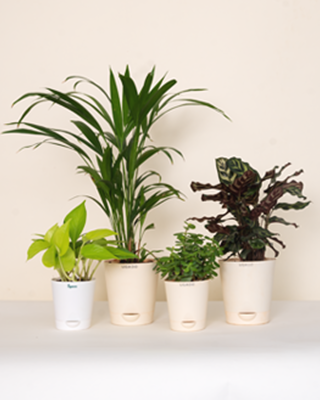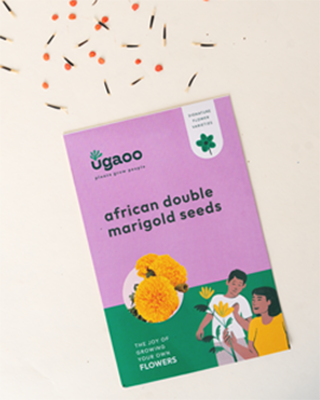Just like us, plants also have to carry out some essential processes in order to survive. Photosynthesis and respiration are two of those basic processes. But why is it essential to protect our plants and how do they benefit us? Here's what you need to know about their benefits and the respiration & photosynthesis process:
Buy Plants
• How Do Plants Benefit Us and Our Environment?

Plants play a crucial role in maintaining the health and balance of our ecosystem. Here are five key ways they contribute:
1. Oxygen Released by Plants
Through the photosynthesis process, plants absorb carbon dioxide and release oxygen. This oxygen is essential for the survival of most living organisms, including humans. It helps maintain the atmospheric balance and is vital for respiration.
2. Carbon Sequestration
Plants absorb carbon dioxide from the atmosphere and store it in their biomass, helping to mitigate or lessen the effects of climate change. This process, known as carbon sequestration, reduces the concentration of greenhouse gases in the atmosphere, thereby helping to stabilize the global climate.
3. Soil Health and Erosion Control

Plants enhance soil structure through their root systems, which help to bind soil particles together, preventing erosion. Their roots also contribute to soil fertility by breaking down organic matter and adding nutrients to the soil, promoting healthy microbial activity.
4. Water Cycle Regulation
Plants play a key role in the water cycle by absorbing groundwater and releasing water vapor through transpiration. This process contributes to cloud formation and precipitation, maintaining the water balance in ecosystems and supporting the hydration of the soil and groundwater supplies.
5. Biodiversity Support
Plants provide habitat and food for a wide range of organisms, including insects, birds, mammals, and fungi. They are fundamental to biodiversity, supporting complex food webs and ecological interactions that sustain life on Earth. Their presence ensures the survival of numerous species and the health of various ecosystems.
• Photosynthesis Process In Plants: What Is It?

Photosynthesis in plants a crucial process, allowing them to convert light energy into chemical energy stored in glucose. This process primarily occurs in the chloroplasts, which contain the pigment chlorophyll. Chlorophyll absorbs light, primarily in the blue and red wavelengths, and initiates the photosynthesis process by splitting water molecules into oxygen, protons, and electrons.
The light-dependent reactions of photosynthesis take place in the thylakoid membranes of the chloroplasts. Here, light energy splits water molecules (photolysis), releasing oxygen as a byproduct and generating ATP and NADPH, which are energy carriers. These reactions convert solar energy into chemical energy.
The light-independent reactions, also known as the Calvin cycle, occur in the stroma of the chloroplasts. Using ATP and NADPH produced in the light-dependent reactions, the Calvin cycle incorporates carbon dioxide from the atmosphere into organic molecules, eventually producing glucose. This glucose serves as an energy source for the plant and as a building block for growth.
The photosynthesis process is essential not only for plants but also for life on Earth. It produces oxygen, which is necessary for the respiration of most living organisms, and forms the base of the food chain, supporting life by providing energy-rich organic compounds.
• The Plant Respiration Process?

This is essentially the opposite of photosynthesis. The plant respiration process is used to convert glucose and oxygen into energy, carbon dioxide, and water. Unlike photosynthesis, which only occurs during the day, respiration happens all the time, both day and night.
Here’s how it works: plants take in oxygen from the air through small openings in their leaves called stomata. Inside the plant cells, oxygen helps break down glucose, which the plant made during photosynthesis. This process releases energy that the plant uses for growth, repair, and other vital functions. The byproducts of respiration are carbon dioxide and water, which are then released back into the air through the stomata.
Respiration is essential for plants because it provides the energy they need to perform various activities, such as absorbing nutrients, producing new cells, and maintaining their overall health. It's a continuous process that keeps the plant alive and functioning properly.
Buy Plant Care Products











